How To Read a 9-Card Tarot Spread: Super Accurate
Tarot cards have always fascinated me. To think that a deck of cards can tell things about your past, present, and future. Isn’t that incredible?
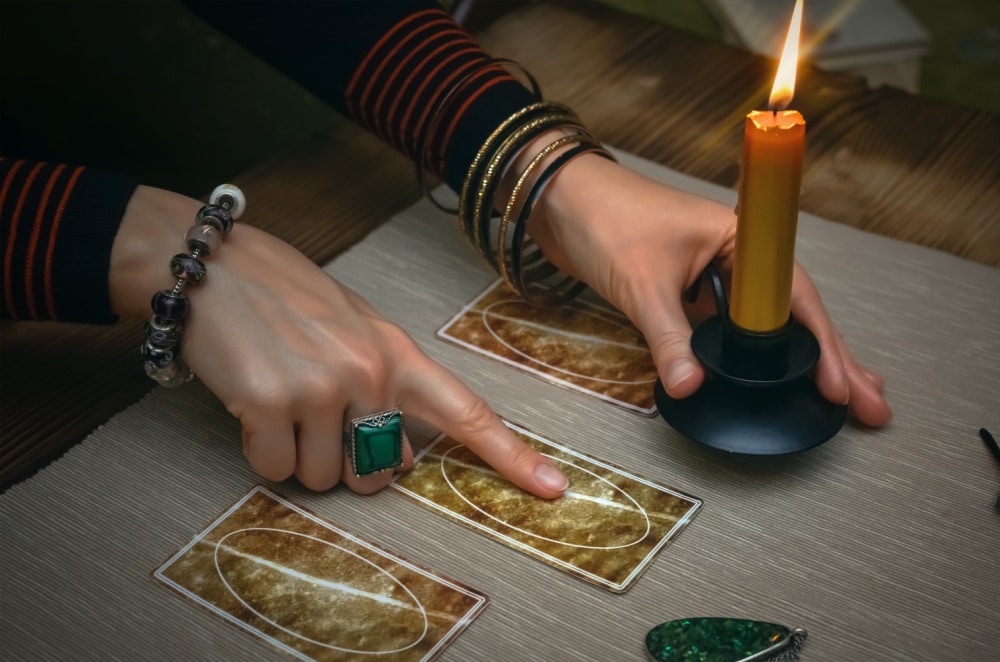
Reading tarot cards is even more intriguing when you think about how these cards can give you insights into your life. It can tell you about the challenges you face, your relationships, and many other things. It is exciting that you cannot help but sink deep into the art of reading tarot cards.
One of the basics of tarot cards is the spread, which is physically laying out the cards on the table in a specific pattern. The same as there are many different tarot card decks, there are also many different types of spreads.
One of them is the 9-card spread, also known as the picture spread, box spread, square of nine, and 3×3 Lenormand spread. I’m here to teach you how to read a 9-card tarot spread — one of the most popular tarot card spreads.
Table of Contents
Learning How To Read the 9-Card Tarot Spread
The 9-card spread is one I would generally use for efficiency, if I want more detail in a given situation, or if I have more time to go in-depth in my readings.
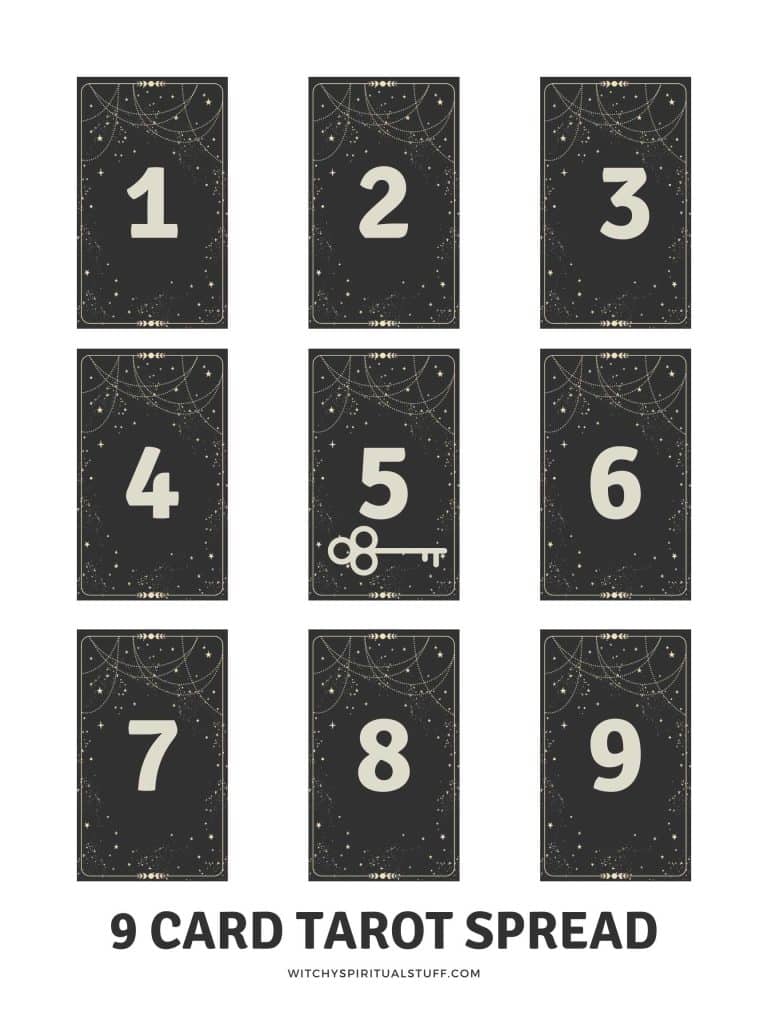
For those unfamiliar with the spread, Marie Anne Lenormand popularized it. She was a French fortune-teller highly famous during the Napoleonic era.
The Lenormand deck is a divination system and has a more literal symbolism. Therefore, the 9-card spread permits more literal interpretations.
The 9-card spread essentially contains nine cards lined out in threes, consisting of three Lenormand cards. This is how the nine cards are laid out. However, there is so much more than the 9-card spread. It is different from other spreads because you can read it in various directions.
This spread can also provide more information than you would ever expect from mere nine images. Interesting, right? Now, let’s talk about how to read the 9-card tarot spread.
Picking Your Cards
The first step is picking the nine cards. I do this pretty much the same as when I lay out other spreads, like the 5-card layout.
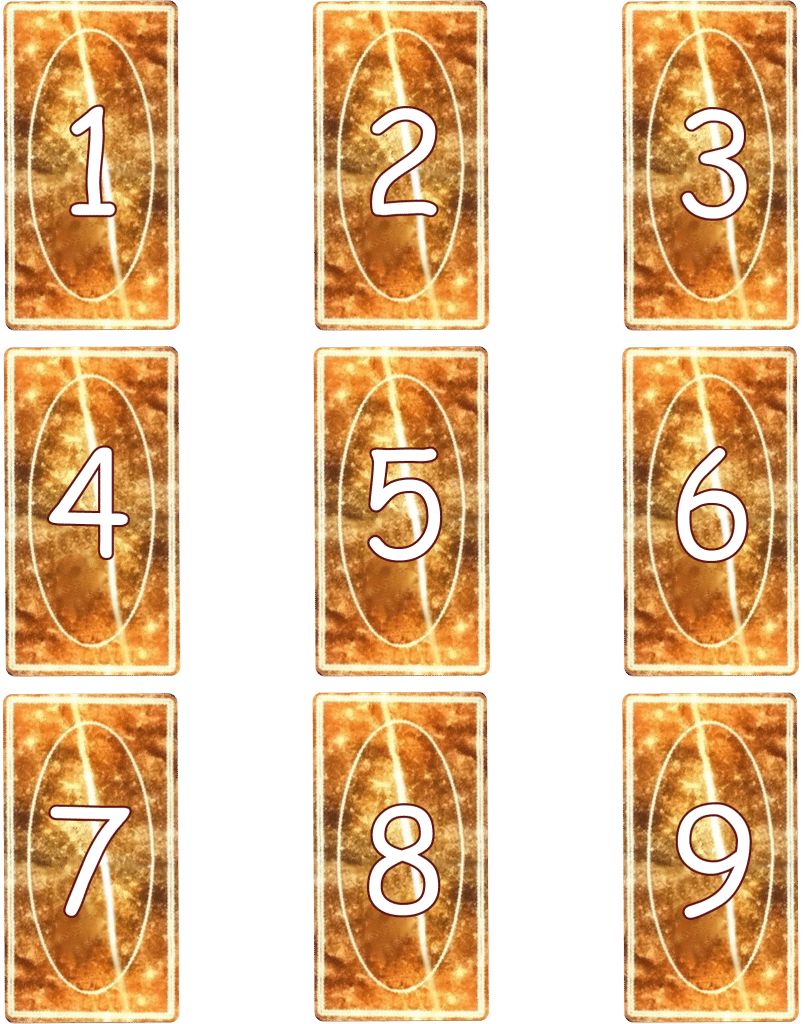
I start by shuffling the cards while thinking, concentrating on the question I want to be answered. While doing that, I pick the cards that “feel right” out of the deck.
When it comes to the key card, I would often pick it beforehand as I use the 9-card spread to find out more about something that has been on my mind.
After shuffling and picking the remaining eight cards as I “feel,” I then stop and take my key card out of the deck. The next step is the actual laying out of the cards with the key card at the center as Card 5.
I then used the rest of the cards that I pulled to form the rest of the layout. This method is unique to me, which means not all tarot card readers do the same.
Some would lay the cards in order of one to nine after shuffling and cutting the deck.
It’s also important to know that it is perfectly okay if you have nothing to focus on or have a key card. Sometimes, doing a “blind” reading may actually be helpful. I find that blind reading can sometimes provide you with unexpected information. It is kind of the same principle as serendipity, fate, or destiny — you get even better information, the one that you really need.
You can read your 9-card tarot spread intentionally or let the universe speak to you. Either way, I’m here to share with you how to read a 9-card tarot spread, even if you are a beginner.
Here is how I read the box spread, the 3×3 Lenormand spread.
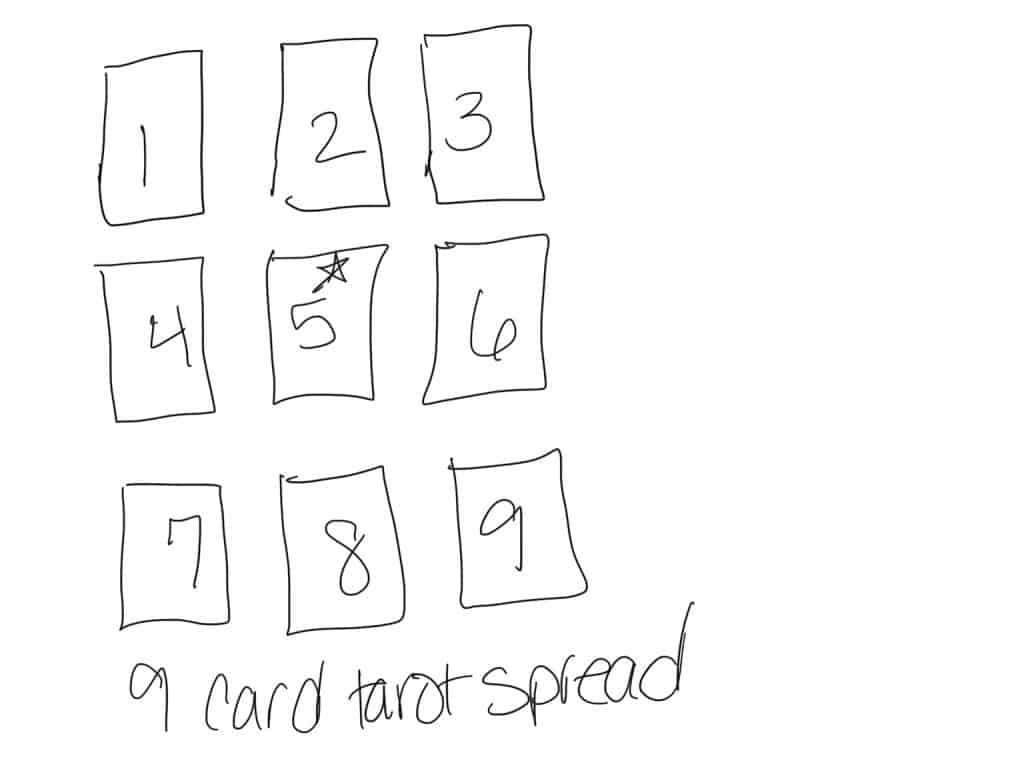
Center Card
Let us start with the central card: the number five. The number five is significant because it represents the fundamental theme surrounding the reading.
The central card can be the significator, which describes the person you are reading for. It can also be the core of the question, describing the essence of the problem and its answer and outcome.
Corner Cards
Another way to read a 9-card tarot spread is through its corner cards. These are cards one, three, seven, and nine. They are the frame and can provide the context of the reading, giving it a structure.
There are two ways to read the corner cards. One is by reading it as a giant “X” with two opposite corner cards paired. The second is to go around the corners, reading every corner card clockwise.
Reading Horizontally
One of my favorite methods of reading the 9-card spread is done horizontally. The first line would be cards one, two, and three. This line is the line of thought, meaning they are all about our ideas, aspirations, and dreams. They represent what we aim for in life.
You probably noticed, but this line is above the center card, the significator, or the person the reading is for. I think it’s an apt symbolism for the things that are “above us.”
Next is the second line, which has the cards four, five, and six. These cards represent your reality. They are your day-to-day life. To be specific, this line can tell me of the delightful existence that I deserve, or it can tell me the dilemma that I am in.
The second line is the earthly plane, which is the most literal. Reading this can tell you concrete details such as timing or description of people.
The bottom row consists of the seven, eight, and nine cards. They represent the subconscious mind, the undercurrent shaping your current situation. It is what can be found below you — the foundations where you stand on.
This line indicates secret desires, intuition, and inner wisdom. In learning how to read a 9-card tarot spread, it’s essential to give this row special attention to expose private concerns and feelings.
Reading Vertically
Reading vertically can tell you about the time frame and provide information about the significator’s recent past, present, and near future.
For instance, it can indicate if your present situation will not change in the future. The first column — which consists of cards one, four, and seven — represents the past.
The second column with cards two, five, and eight belongs to the present. The last and third column comprising three, six, and nine tell the near future.
In reading the cards vertically, do consider the context. Based on the context, the recent past often tells about events occurring within one to three months before the reading.
Meanwhile, the near-future column predicts what will happen three to six months after the reading.
These make vertical reading ideal for short-term predictions, which is when you want to discover the general overview of one’s life within that short time.
Reading Diagonally
If I need more information, I can read the 3×3 spread diagonally.
It could be cards one, five, and nine or seven, five, and three. This represents directions, like the path where the situation might be moving.
Reading diagonally is helpful when you want to know about possibilities and influences that can change the current situation.
Wrapping Up
That’s it. This is how to read a 9-card tarot spread. With a 3×3 spread, you can already learn much about a person.
Having nine cards spread in front of you to read might seem complicated, but I assure you, it only takes some practice. You can be your dream tarot card master by doing more and more readings. I am sure you can do it!

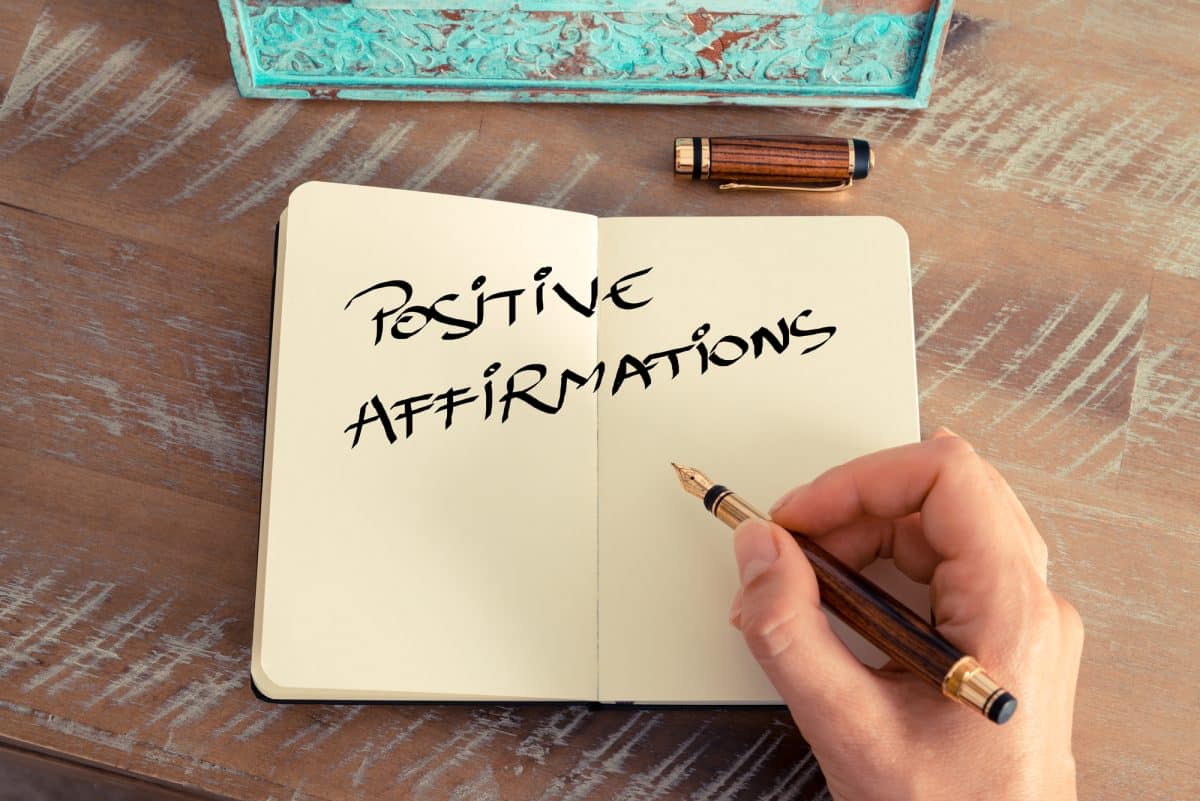





I just dont know how to apply the cards towards my situation or how to get ä1 answer using 3 cards.i dont get it.
You will sort of see that it’s a past, present future thing. Look for how the cards connect to each other.
This is a great teaching tool. Thank you for offering it!